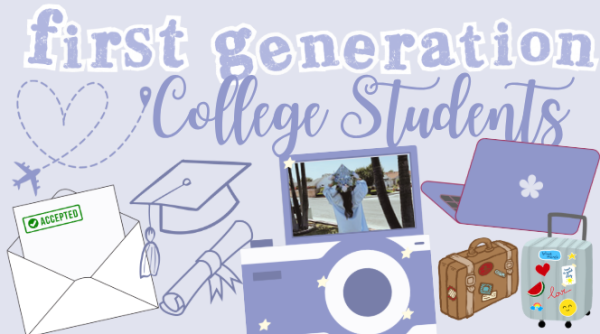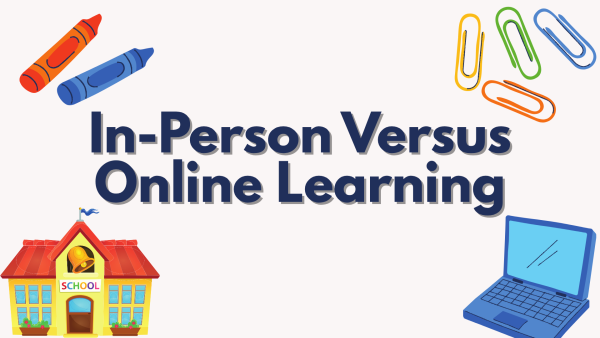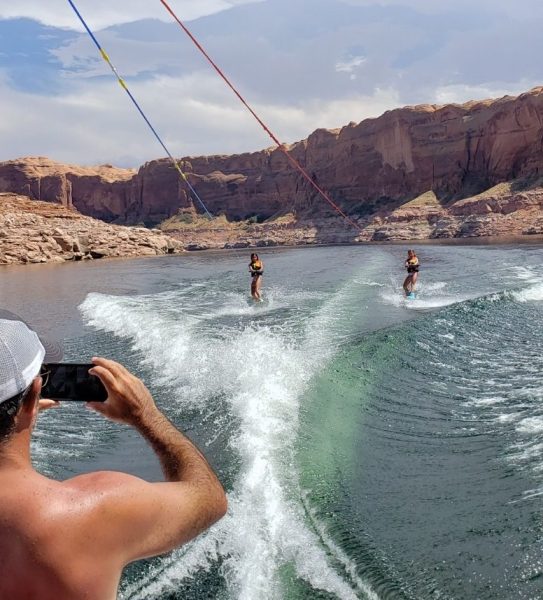What is the “A” in LGBTQA+?
Coined as the “internet orientation,” both the terms aromantic (aro) and asexual (ace) come with a slew of misconceptions, starting with their place in the LGBTQA+ acronym. Most are familiar with the first letters: lesbian, gay, bisexual, transgender, and queer but are unable to identify the “A.” Some believe it stands for ally, which is argued, but the group it mainly represents are those on the asexual and/or aromatic spectrum(s).
To fully understand an aro/ace identity, it is vital to recognize the different forms of attraction. A few main types of attraction include sexual, romantic, aesthetic, sensual, and emotional.
Sexual Attraction:
Hence the name, sexual attraction is having a desire to be physically or sexually intimate with another person.
Romantic Attraction:
Different from sexual attraction, romantic attraction is the desire to be in an emotionally and romantically intimate relationship.
Aesthetic Attraction:
This is the attraction to how someone or something looks.
Sensual Attraction:
Sensual attraction is the desire to be physically affectionate in ways such as cuddling or hugging.
Emotional Attraction:
Though it is different from romantic attraction, emotional attraction also involves a deep connection but can be present in platonic friendships and romantic or sexual relationships.
While these forms are separate, they do tend to intersect when it comes to any kind of relationship. Some relationships will include many or all types of attraction, and others, just a few. The same goes for people; while one person may find themselves feeling every form consistently, others may only feel a few or rarely experience a certain kind. Each person’s encounters with each form of attraction are uniquely different.
For an asexual individual, sexual attraction is limited or nonexistent. The same goes for aromantic people, but with romantic attraction. Both of these orientations are on a spectrum and do not refer to a person’s sexual or romantic activity, but rather how they experience attraction. Some asexual people still choose to engage in forms of sexual activity while others do not. Aro individuals may involve themselves in romantic relationships, some do not, and others are in queerplatonic relationships or QPRs. Neither of these control gender or gender attraction, meaning one can be heteroromantic, bisexual, panromantic, non-binary, etc. In fact, studies of asexual people from 76 different countries found that 68.7% are part of the LGBTQ+ community and another 17.1% are unsure. Someone can also be aro and ace, or just one or the other.
Similar to how there are different kinds of attraction, there are also different kinds of relationships. Most will experience at least a few throughout their lives. It is important to note that no one kind of relationship is any better or more valuable than another. Some familiar ones are platonic relationships such as friendships, family relationships like mother and daughter, and romantic relationships which often include dating. The variations within each of these are widely different as there is no “right” way to go about any type of connection. Another major relationship, which is new to many, is a queerplatonic relationship, or QPR. This refers to a relationship that is neither romantic nor sexual but is stronger than a typical friendship. Like all other kinds of relations, QPR’s have no perfect mold and are different for each individual in them.
Much like other orientations within the LGBTQA+ community, aro and ace persons often use micro labels – sub orientations included within a larger umbrella. Many people choose to only share their umbrella term instead of the micro-label, and others use the sub-orientation. Aromantic and asexual are both umbrella terms. Two well-known micro labels are demisexual/romantic and graysexual/romantic. Demiromantisim or demisexuality explains an individual who does not feel romantic or sexual attraction respectively until a close bond has formed. Grayromantisim and gray sexuality reference the “gray area” of the aromantic and asexual spectrums. People who are gray romantic or graysexual may have limited desire to be in a romantic/sexual relationship or may only have these kinds of attractions in certain circumstances. This orientation has a wide range of experiences and can also be considered an umbrella term.
Though there has been a slight increase in aro/ace exposure in media, most asexual individuals, like HBHS student Kaia Podd, say, “there is a very little amount of representation of aro/ace people, characters are hardly ever canonically ace and/or aro, and there aren’t any in super popular franchises.” In recent years, television shows such as Sex Education, Shadowhunters, and BoJack Horseman have started incorporating asexual characters (aromantic representation is much less common). Podd added, “I think the few depictions of aro/ace people written by aro/ace people or people who have done their research are accurate, there just aren’t many.” The entertainment industry is getting on the right track, but they still have a long way to go.
The education system is a different story. “There is not enough visibility and education on aro/ace orientations in schools because there is none,“ said another anonymous individual on the asexual spectrum. They continued saying, “the most recognition of the existence of aro/ace people is in passing.” Some schools are beginning to incorporate LGBTQA+ representation in health classes, but even when they do, it tends to be skimmed over and leaves out many groups. Podd said, “schools don’t teach anything but heterosexual sex education and other things centered around only straight people. There should be education about all queer orientations and identities in school, including aro/ace people.”
In general, there is very little coverage of aro/ace orientations. “Most people (even adults) don’t know that the labels exist or their definitions,” Podd said. Deprived of this information, many people who are aromantic or asexual are unable to find these orientations, often leaving them feeling like there is something wrong or missing. This also affects those who are not aro/ace because they lack understanding and the skills to support those in their lives who are.
Our anonymous individual closed by saying, “I think that a lot of times people’s ideas of aro/ace people are extreme because of what they expect from someone who doesn’t necessarily feel romantic or sexual attraction, when, in reality, we are just people.”
Your donation will support the student journalists of Huntington Beach High School. Your contribution will allow us to cover our annual website hosting costs.
Thank you for supporting our program!







